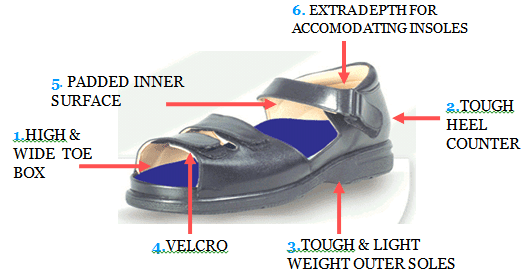
When blood sugar levels are poorly controlled, most parts of the body get damaged including the vessels and nerves that go to the feet. And because of this process, people with diabetes have high risks of developing foot problems, which may lead to surgery. Post-op, however, can also be a challenging time. Here are the best shoes for diabetics after surgery to help in the healing process.
If you need shoes specifically designed for diabetics or post-op, this article can help you in choosing the right one.
Type of Diabetic Shoes you Need After Surgery
If you have had foot surgery, your doctor might recommend one of the following options of shoes:
- In-depth shoes: These type of shoes are a quarter to half an inch deeper than your normal shoes. The extra room in these shoes is meant to accommodate the changes that can happen in the foot such as hammertoes or calluses. They also give more room in case you need inserts.
- Healing shoes: These shoes are worn especially after having the foot surgery. There are two types—closed-toe and open sandals. Unless ordered by your doctor, open-toed are not normally recommended by the doctor if you have diabetes.
- Custom-made shoes: If your feet have a deformity, this type of shoe is good for you as it is designed from the shape of your feet.
Apart from buying new shoes, you can also modify the ones that you already own by adding a sole which is more shock-absorbent or orthotics, which are inserts that take the pressure off your feet providing more comfort.
Where to Find Diabetic-friendly Shoes
The first place to go is your primary care doctor or podiatrist who can recommend the right shoe for you according to your feet. For you to get a fitted shoe, you can also visit a specialist, such as an orthotist, who is a medical practitioner that makes and prescribes the best shoes for diabetics. The specialist may get the shoes for you from different outlets such as an online store, pharmacy or a shoe store that specializes in such footwear. If your doctor prescribes these types of shoes, check with your insurance company to know whether they can cover them or not.
Features to Look for in the Best Shoes for Diabetics
After having foot surgery, finding a good shoe is very important. You don’t want to have shoes that make your feet to slide when you are walking, this can cause sores, blisters and calluses.
The following features will help you in finding the right shoes that fit well with the shape of your feet:
- A lightweight shoe will enable your feet to breath and move easily.
- Find a shoe made with a flexible material such as suede, canvas or leather.
- An important feature to have in a diabetic shoe is a sole which is shock-absorbent. This will help in reducing the pressure at the bottom of your feet.
- Having shoes with laces that you can tighten or loosen is good because you can easily adjust it if your feet swell or changes.
- A solid back in the shoes is great in order to provide more support.
If you have a had foot surgery, the following are types of shoes that you should avoid wearing:
- Pointed-toe shoes: They restrict circulation in your toes.
- Shoes with arch support: They can break the tissues of your feet.
- Shoes that don’t fit you well can cause further injuries.
- In most cases, high heeels: If you have to, one with less than 2-inch heel and a round toe style is recommended.
Finding the Right Fit
We would always recommend for you to see your doctor for a post-op follow-up and ask them the questions you’ve been needing to know about shoes. However, before you get into the office, have a few of these details in mind.
The following tips can help you find a fitting diabetic shoe—especially after you’ve had foot surgery:
- Every time you get yourself new shoes, measure your feet because they sometimes grow.
- It is good to buy shoes in the afternoon because your feet tend to swell at this time.
- Try the shoes with the same stockings or socks you are planning to wear the shoe with.
- Make sure that the shoe has enough room for the ball of your foot and the instep.
- The space between your toes and the top of the shoe should have an extra 3/8 to ½ inch.
- Always make sure that your new shoes fit well around the heels.
Tips to Make Sure that Your Feet are Healthy
Having the right type of shoe after foot surgery is just one way of taking care of your feet and helping with preventative care of further injury. While we’re already on the topic of health and foot care, we would also recommend that you should visit your podiatrist for check-ups—especially post-op.
Observing the following additional tips will enable you to keep your feet healthy:
- Always check your feet daily to make sure that ulcers, sores or calluses are not developing.
- In order to prevent ingrown toenails, cut them straight across. Do the trimming regularly as well.
- Use an exfoliating brush or a pumice stone to gently smoothen your calluses and corns.
- Avoid using sharp objects or razors on your feet.
- In order to improve circulation in your feet, wash them daily with warm water.
Conclusion
Foot problems such as blisters and sores can be a huge deal if you are diabetic. If not correctly treated, they may cause serious infection which may lead to foot surgery. If you have the unfortunate circumstance of having to go through foot surgery, during your post-op, having the right shoe is the best thing you can do for your feet. Otherwise, the healing will take quite a long time and you can risk getting injured again. Following the above tips will help you get the right shoe to keep your feet healthy again.

